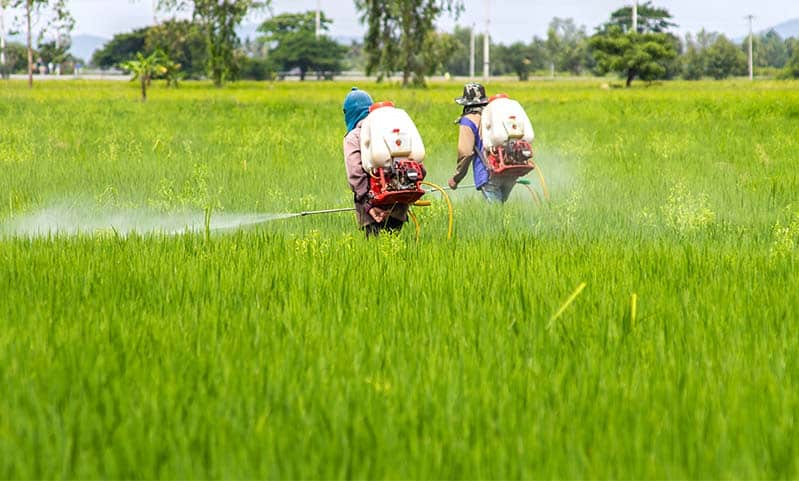Strawberries, spinach, and other green leafy vegetables topped an advocacy group’s Dirty Dozen list of consumer foods contaminated by dangerously high levels of pesticides.
An Environmental Working Group study concluded that 70 percent of the non-organic fresh produce sold in the United States is laced with dangerously high levels of deadly pesticides, herbicides, and other chemicals.
Precautions like peeling, scrubbing, and washing does not always remove all these contaminants.
A Harvard University study suggests that people who eat non-organic produce have higher levels of urine or kidney problems.
Pesticides and herbicides have also been linked to fertility problems.
Simultaneously, the EWG released a list of the “clean fifteen” produce products. Avocados, sweet corn, pineapples, and onions topped this list.
CropLife America President and CEO Chris Novak insisted that the “benefits of a diet rich in fruits and vegetables outweigh any possible risks from exposure to pesticide residues.”
Common Pesticides and Herbicides
The stronger the chemical is, the more bugs it kills, and the larger the harvest becomes. As far as food producing companies are concerned, more food products equates to higher profits.
Paraquat is a good example.
This common pesticide is extremely effective and extremely dangerous. Researchers have linked Paraquat, which has been widely used since the 1960s, to Parkinson’s disease.
The most widely used commercial pesticide in the world, Roundup, is another example.
The manufacturer recently agreed to pay billions of dollars to settle current lawsuits and some future claims. Roundup’s use exploded in the 1970s when Monsanto rolled out a line of genetically modified seeds which maximized this herbicide’s effectiveness.
Dangerous pesticides are so common because the Federal Insecticide, Fungicide, and Rodenticide Act essentially allow these companies to regulate themselves.
FIFRA requires these companies to submit safety information, but the Environmental Protection Agency does not always verify these submissions.
Additionally, the EPA frequently doesn’t consider the health effects of multiple pesticides sprayed on the same crop. Chemical A and Chemical B might both be safe, but their combination is frequently dangerous.
Establishing Liability
Manufacturers are strictly liable for the injuries their dangerous chemicals cause.
Legally, victim/plaintiffs must only establish the use-injury connection by a preponderance of the evidence. That’s the lowest standard of proof in the law. But there are some issues.
The weight of the evidence is a good example. Monsanto and other chemical companies routinely call expert witnesses who insist that the hazardous substance is safe.
Their testimony should be reviewed carefully by jurors.
Therefore, the minimum evidence requirement usually isn’t enough. The use-injury connection must be strong enough to withstand these onslaughts.
Fortunately for victims, the law in many states, including New York, makes it easier for a New York personal injury attorney to present scientific connection theories in court.
Damages Available
Dangerous pesticide claims usually involve cancer and other serious, chronic illnesses.
As a result, these victims often face hundreds of thousands of dollars in medical bills. Compensation is available for these and other economic losses. Additional compensation is also available for noneconomic losses, such as pain and suffering.
In many of these cases, jurors award significant punitive damages in addition to compensatory damages.
Punitive damages send a strong message to chemical companies that they must change the way they do business.
As mentioned, the federal regulations in this area are somewhat weak. When the government fails to protect people, a New York personal injury attorney must stand in the gap.
Dangerous pesticides often cause serious injuries. For a free consultation with an experienced personal injury lawyer, contact Napoli Shkolnik PLLC.
